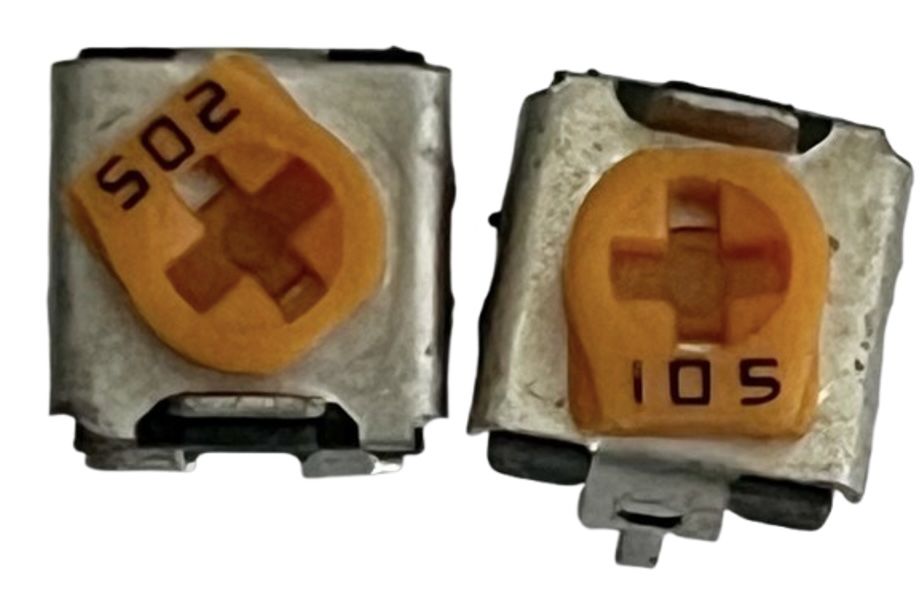Insights from repairing a 30V 5A power supply (BPS-305)
When I started working on a project (hopefully more on that soon), I reached out for an old 30V 5A power supply (Lavolta BPS-305). I rotated the voltage dial to try to get to 24V and observed that the voltage would not go past 15V, even though it is rated for 30V. Even though this supply was a few years old, I had not personally used it before. So, it wasn't clear whether it was a previously-functioning supply that stopped working, or whether it was always broken.
Fig. 1 - Lavolta BPS-305 power supply
Upon some more poking and prodding, I identified that the power supply had several issues:
- Output voltage only goes up to about 15V instead of 30V max.
- Output voltage is not stable and fluctuates at steady state, appearing unregulated. See video below.
- Output voltage flickers when relays switch around ~7V and ~14V and the relays keep flickering unless the voltage is moved far away from the transition points.
- Output current measurement (when HI/LO button is pressed down to LO) is off by a factor of 2.
- Output current measurement (when HI/LO button is pressed up to HI) displays zero.
Output voltage unstable at "steady state" - moving between 10.2V to 11.1V with a fixed output load
Hopeful that I can repair the supply, I opened it up. Noticing a relatively simple one-layer PCB, I set out to find a schematic or other reference for the supply. This is where I realized that many many (low-cost) 30V 5A power supplies are based on the same couple designs. I'll link to a few useful resources here that I came across during my search:
- 0174: PS 305 Power Supply 30V 5A Repair by Engineering Secrets
- Repair of a Dr. Meter PS-305DM Power Supply
- #16 PS-305D Repairing and corresponding youtube
- How to repair or design a 3005D Electronics Laboratory Variable Power Supply & formulas for 30V 5A
The resources linked above contain many of the schematics for the supplies. I've added Drive mirror links to several of these schematics, in addition to the Lavolta PSU manual, here: https://drive.google.com/drive/folders/1G1oorJG2v6LsT8LSzIfBv23qdOBqhMGH?usp=drive_link
Instead of going through all my investigations, I'll highlight a few standouts here.
Broken potentiometers
After lots of investigating, the key offenders were 2 broken potentiometers. Referring to the file PS305D Schematic Main in the Drive link, these are VR104 and VR102. These are shown below in Fig. 2.
Fig. 2 - The culprits. VR104 is marked 502 (5kΩ) and VR102 is marked 501 (500Ω). Both parts measure open at component ends.
VR104 is used for output voltage feedback. Once this part was replaced with a functioning 5kΩ pot, the output voltage was now stable and would go all the way up to 30V. The pot is trimmed until the max output voltage is 30V.
VR102 sets the max output current when the HI/LO button is released (HI -> 5A current limit). There was no current limit being set in this setting with the faulty part. Since I did not have a 500Ω pot on hand, I replaced VR102 with a 5kΩ pot in parallel with a 470Ω resistor. This allows tuning the resistance as shown in Fig. 3. Fig. 4 shows the parallel 470Ω resistor soldered on the back side of the board. Once these parts were provisioned, the 5kΩ pot was trimmed until the max output current was set to 5A. The red dot in Fig. 3 indicates the final trimmed resistance.
Fig. 3 - combined resistance of 5kΩ pot in parallel with 470Ω resistance as the pot is trimmed.
Fig. 4 - soldered 470Ω resistor in parallel with VR102
FIg. 5 - the two blue potentiometers replace the broken ones in Fig. 2
Tuning the current display
Fig. 6 - Output current reading 6.89A when the real measured value is 5A
Fig. 7 - DMM on the PSU; the trim pots are the blue components near each chip. Left display is for current and the corresponding trimpot is VR211. Right display is for voltage and the corresponding trimpot is VR201.
When the HI/LO button is pushed down to the LO position, the PSU's output current limit is set to 2.5A tuned by VR101. When the HI/LO button is at the HI position, the output limit is set by VR102 (and the parallel 470Ω resistor) as described previously. However, there was a fair bit of error on this reading, as shown in Fig. 6. By adjusting VR305 (see PS305D Schematic Controls in the Drive link) in conjunction with the reference voltage set by the blue trimpot VR211 (see PS305D Schematic Display in the Drive link) in Fig. 7, the output current can be tuned. Since VR211 affects the reference voltage for the current meter, adjusting it affects both the HI and LO current readings. The procedure then was to set the switch to HI and then tune VR211; once that is corrected, switch to LO and then tune VR305.
Relay-selectable transformer secondary winding
Fig. 8 - secondary selection scheme with relay
Because the regulation stage in the power supply is based on a linear regulator, the difference between the input and output power is dissipated as heat. Since the power supply has a large selectable output range, this would result in very high power dissipation in the regulator at lower input voltages. To overcome this drawback and reduce the power dissipation, the power supply utilizes a selector circuit on the secondary as shown in Fig. 8.
As an example, let's consider that the output power is desired to be 3.3V. Suppose the input voltage post-rectifier is 40V (which is the case between S3-S0 for the BPS-305). At an output current of 3A, the power dissipated in the regulator would be roughly: Pout-Pin = Vout*Iout - Vin*Iin ~ (Vout-Vin)*Iout = 110.1W. All this for only 13.2W of output power. At lower output voltages and higher output currents, this gets even worse!
By using the scheme shown in Fig. 8, the voltage at the input of the regulator is selected based on the desired output voltage to reduce power dissipation. With the example above, now suppose that for 3.3V, the input to the regulator is 14.8V, the power dissipation is reduced to 34.5W now! That's 75W less than the previous example!
For my unit, the voltage bins transitions happen for output voltages 8V, 15V, 21V and 30V. This is a good design decision rather than having a fixed 40V input for the regulator.
Output testing
Fig. 9 - constant current circuit using LM317
Other observations
- The logic GND for the electronics are shorted to the positive output instead of the negative output. Even though the circuits in the PSU closely reflect those of PS305D Schematic Main/Display/Controls, this grounding scheme is reflected in hy_3005_dc_power_supply.
- Many of these 30V 5A power supplies seem to be based on a couple base designs with slight tweaks in implementation.
- The build quality appears shoddy. Many components were haphazardly soldered - many caps weren't fully seated. The fan wires run adjacent to (and touch) the (potentially very hot) heatsink for the transistors. However, none of these appear to impact functionality, at least in the short term.













That's cool, Vaiya. I have a similar power supply (Maisheng MS-30100) at home with the same issue. The output voltage is unstable and fluctuates in a steady state, appearing unregulated even when I adjust the voltage dial to stabilize it. Hopefully, I can fix it now.
ReplyDelete